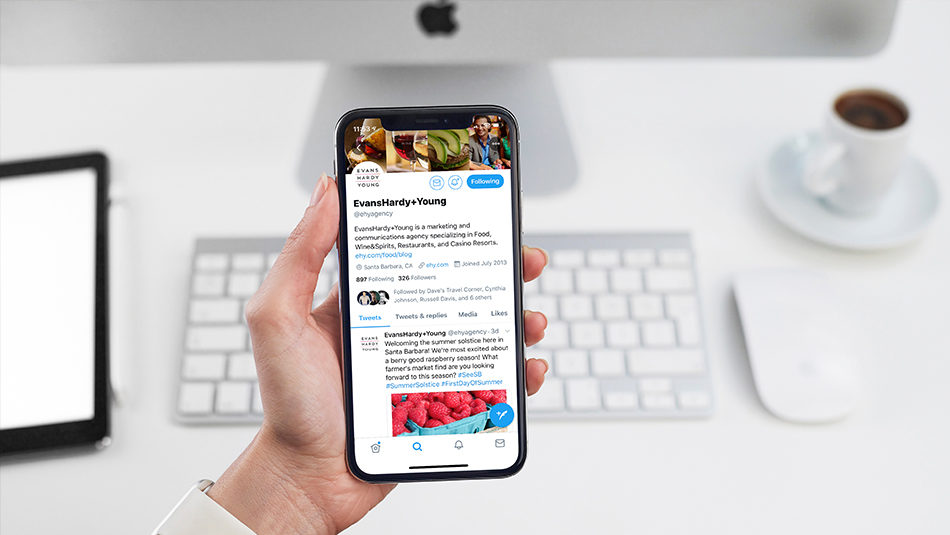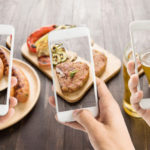
Demystifying Twitter for Food Brands to Drive Results
With its abundance of appetite appeal, glamour shots and videos of delicious foods, Instagram seems like the most natural fit for food marketers. Functioning in a similar way as traditional advertising, a powerful image on this platform is worth a thousand words. Twitter, on the other hand, is the antithesis of this. This is why many marketers find the platform puzzling. When it comes to using Twitter for food brands, here are a few tips to demystify the platform, and help you drive results.
Twitter is where many headlines and trending topics begin, but at its heart it is just a steady stream of rich conversations. It can be someone talking to themselves, 1:1 conversations or group think in action. Breaking news, political meltdowns and uprisings are taking form on this channel, so it takes more than a great social influencer or a pretty food picture to break through the noise. Twitter users are savvy. They demand a speedy response, quick wit and they want to support food brands that pack personality into 280 characters.
Twitter isn’t like other social media platforms and it is not for amateurs. It’s a treasure trove of priceless consumer insights and a place where blatant advertising goes to die.
First, Does Your Food Brand Even Need Twitter?
It’s important to think of social media as the eyes, ears and mouthpiece for your brand. It’s ability to ask questions, interact directly and get a response in real time makes social media so unique and vital to your customers.
Of all the social platforms available, Twitter has the most robust listening capability, especially since there aren’t the same kind of privacy regulations as Facebook and Instagram. We all want to make customer-insight driven decisions and fast food chains like McDonalds and Chik-Fil-A have used Twitter to do just that. Countless menu and product changes are implemented because people spoke and brands listened.
Twitter is also a great place for spotting trends, providing social care and addressing customer service issues. One of the biggest reasons brands need to be on Twitter is to catch these moments. Most millennials will not call a 1-800 number if they have an issue. Instead, they tweet a brand directly, and they expect a quick reply.
While social listening and customer care might be the reason to use Twitter for your food brand, the reason you stay is much more interesting.
Twitter Tip 1: Give Your Food Brand a Personality
What consumer wouldn’t want to have a conversation with their favorite foods? It’s completely silly in nature and you, as the brand, have the opportunity to play with this. It’s been reported that 77% of users on Twitter feel more positive about a brand when they were acknowledged with a reply. This makes Twitter an always-on AMA (ask me anything) chat, and food brands have a unique opportunity to lean into that in a humorous way.
In fact, some of the most successful brand accounts are from the QSR space. They have brought a little sass, fake Twitter beefs and more to the platform. The most notable of these accounts are Denny’s, Wendy’s and Arby’s. They all use Twitter to give consumers so much more than the usual branded talking points and dry professional tone. Brands winning the conversation respond with GIFs, sass, bicker with one another and poke fun at themselves and other Twitter users.
 Twitter Tip 2: Jump into Relevant Cultural Conversations
Twitter Tip 2: Jump into Relevant Cultural Conversations
Aside from responding to mentions, the real magic of Twitter happens when you jump into cultural moments when the whole country is glued to their phones. The most famous of these moments actually came from a food CPG brand. When the power went out during the Superbowl, Oreo seized the moment with one tweet. Using the platform, they delivered a fun brand message while everyone’s million-dollar commercials (and the game) went dark.
 Since then, many other food CPG brands have joined in other cultural moments, like PopTarts and Hostess discussing a Presidential run earlier this year. Poptarts even received more Twitter support to run for president than Howard Shultz, the CEO of Starbucks.
Since then, many other food CPG brands have joined in other cultural moments, like PopTarts and Hostess discussing a Presidential run earlier this year. Poptarts even received more Twitter support to run for president than Howard Shultz, the CEO of Starbucks.
While this strategy can draw the most attention, it can also create major gaffes, like when Digorno jumped in on the wrong type of hashtag. Humor is a wonderful tool, but for any kind of brand marketing you have to know what topics are inappropriate.
Bottomline, with all social media, and Twitter in particular, you have to be okay with failure. My advice is fail fast, pivot quickly and make amends at the speed of social. Digorno was able to bounce back by simply not deleting a bad tweet, but personally apologizing to every single person that was offended.
Twitter Tip 3: Plan Ahead so You can Embrace the Unexpected
The important thing to remember is that there are social strategies, content planning, very polished messages, and then there is Twitter. If you want to have a viral moment, you need to play in the arena of personality and humor, jumping into cultural moments. It’s a very fine and risky line, but one seasoned social media marketers and savvy agencies know how to finely walk.
Before you dive-in, take some time to craft the most bullet-proof social strategy possible. Be sure you include a social persona and clearly define your brand voice and tone. Do as much pre-planning as you can, but allow for opportunistic cultural moments. Decide in advance what kind of conversations you want your brand to be a part of and which ones you don’t. For instance, maybe your food brand should never talk politics, but you’re comfortable with the occasional clap-back at a competitor.
The water is warm for food brands that want to experiment with Twitter, so have some fun, loosen the reins and let humor rule supreme.





